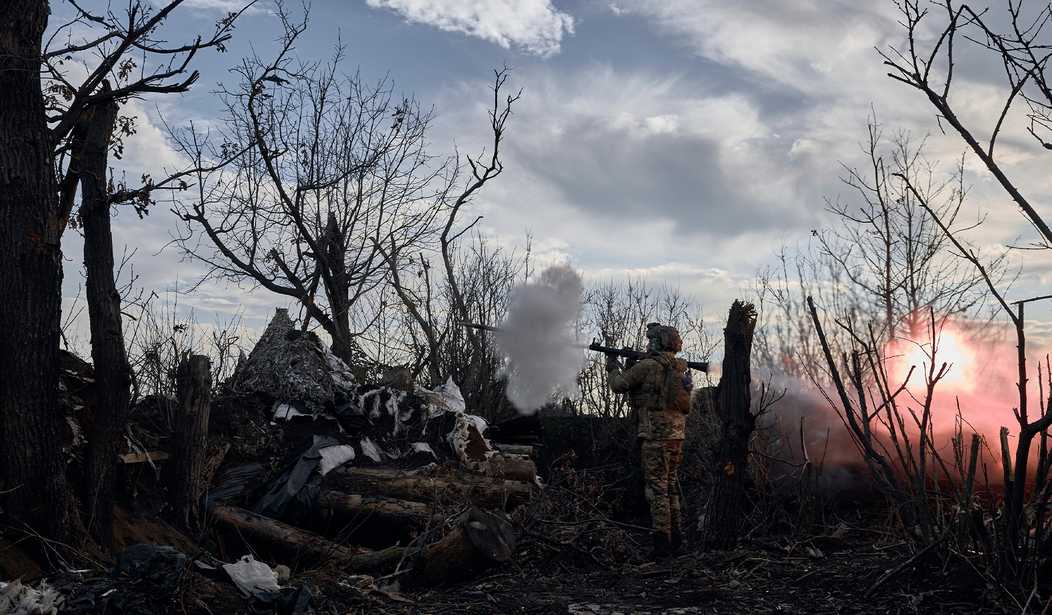The opinions expressed by contributors are their own and do not necessarily represent the views of RedState.com.
Before we get into the question of how long it will take to replenish U.S. military stockpiles depleted by Joe Biden’s ongoing aid to Ukraine, let’s first catch up. My colleague Streiff has written extensively on the Russia-Ukraine War, including the eagerness of Biden and the Democrat Party to fund the endless war.
Here are several of Streiff’s reports:
White House Asks for Another $37 Billion in Ukraine Aid; Congress Needs to Say No
40 Nations Meet at Ramstein to Coordinate Ukraine Aid and Further Integrate Ukraine Into NATO
In total, the United States has committed more than $24.9 billion in security assistance to Ukraine since the beginning of the Biden Administration, according to the Defense Department on January 6. And with no end in sight and U.S. military stockpiles running dangerously low, the question is: How long it will take to replenish those stockpiles?
As Daily Caller reported on Sunday, even at emergency production rates, it will take years before the U.S. is able to restock supplies of critical munitions sent to Ukraine, according to a recent analysis conducted by the Center for Strategic and International Studies (CSIS), a Washington, D.C. based think tank.
In a stark report titled Empty Bins in a Wartime Environment: The Challenge to the U.S. Defense Industrial Base, the CSIS warned:
The U.S. defense industrial base is not adequately prepared for the international security environment that now exists. In a major regional conflict—such as a war with China in the Taiwan Strait—the U.S. use of munitions would likely exceed the current stockpiles of the U.S. Department of Defense.
According to the results of a series of CSIS war games, the United States would likely run out of some munitions—such as long-range, precision-guided munitions—in less than one week in a Taiwan Strait conflict.
The war in Ukraine has also exposed serious deficiencies in the U.S. defense industrial base and serves as a stark reminder that a protracted conflict is likely to be an industrial war that requires a defense industry able to manufacture enough munitions, weapons systems, and matériel to replace depleted stockpiles.
As timelines for a possible conflict in Asia shrink, the goal should be to support the production capacity required to enable the United States and its allies and partners to deter and, if deterrence fails, fight and win at least one major theater war—if not two.
The above points out another troubling reality: The Democrat Party has a tendency to compartmentalize issues without respect for potential impact on other issues. In this case, while Democrats focus primarily on Ukraine, Communist China also pays close attention — with visions of Taiwan “reunification” dancing in the ChiComs’ hegemonic heads.
Meanwhile, according to a fact sheet from the Department of Defense (DOD), the U.S. has sent millions of rounds of ammunition of various kinds to Ukraine, which has resulted in severe deficits in some cases. Moreover, only one of the six weapons in which stockpiles have fallen dangerously low is projected to reach normal levels within five years, assuming no further deliveries to Ukraine, leaving the U.S. scrambling for alternatives, according to the CSIS report.
Mark Cancian, a former artillery officer and Pentagon acquisition official, told Daily Caller:
Longer term, there will be some competition between Taiwan’s needs and rebuilding US stockpiles. That’s why increased munitions production is so important. Most inventories, though not all, will take many years to replace. For most items, there are workarounds, but there may be a crisis brewing over artillery ammunition.
Cancian is obviously unaware of Biden’s assurance that “China’s not going to eat our lunch, man.” [sarc]
It gets worse, via Daily Caller:
The U.S. has provided 1.1 million rounds of 155mm ammunition, a widely-used explosive shell, to Ukraine since Russia’s invasion on Feb. 24, 2022, the fact sheet shows.
At the regular production rate of 93,000 rounds annually, the industrial base would never be able to replenish 155mm projectiles because of the number consumed in standard military training and maintenance operations, the CSIS report said. The base can surge to a rate of 240,000 rounds each year, but even then it would take five years before inventories of 155mm would be fully rebuilt.
GPS-guided 155 mm munitions are also at risk, according to the analysis. Recent production rates of 1,000 per year mean it could take seven years to refill U.S. inventories, or four years at an accelerated production rate.
At the recent rate of production, it will take eight years to replenish U.S. stocks of Javelins; surge production rates could shorten the timeline to five and one-half years, according to the CSIS analysis. Javelin stocks have become so strained that DOD suspended further deliveries to Ukraine to avoid undercutting plans for dealing with possible conflicts elsewhere.
Stinger missiles could take even longer, up to 18 years, corresponding with decreasing demand within DOD for the munition.
The list goes on.
Are U.S. weapons inventories getting too low because of transfers to Ukraine? Although most inventories are acceptable, some key munitions will take many years to replace, writes @csis_isp expert Mark F. Cancian.
Learn more: https://t.co/YMM3yZ1GQi pic.twitter.com/M2lEgm0oeE
— CSIS (@CSIS) January 12, 2023
In summary, Cancian said, “The Ukrainians will never run out of ammunition.” Supply for lighter weapons, like rifles and machine guns, could continue indefinitely, but “artillery ammunition,” the foundation of ground warfare, “has been the most difficult.”
The Bottom Line
The Russia-Ukraine War has been a slippery slope for U.S. interests from the beginning, both from a psychological perspective and a military resources perspective as well. Pretending that Ukrainian President Volodymyr Zelensky is a hero in the sense of desperately trying to hold onto democracy in his war-torn country is suspect at best.
In addition, continuing to ship billions in U.S. aid to Ukraine has undoubtedly created a sense of security in Zelensky and the Ukrainian people that might very well preclude a settlement with Putin’s Russia which might otherwise be obtainable, as Putin increasingly faces criticism at home for the protracted war.
While the U.S. government might have finally learned that “nation-building” isn’t all that good of an idea after Biden’s disastrous Afghanistan debacle, perhaps we should also learn a lesson from the never-ending story in Ukraine.















Join the conversation as a VIP Member